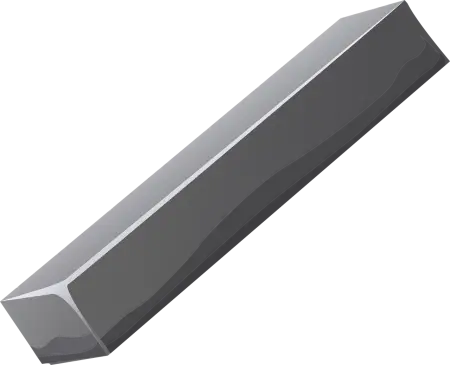
In this article, we will dive into a particular type of three-dimensional geometric body: square prisms. These geometric shapes are not only visually attractive but also contain unique properties that invite us to discover their secrets.
In everyday life, we can find square prisms in various objects and architectural structures. From modern buildings to product packaging, the presence of square prisms highlights their importance in design and construction.
In this article, we will explain the main characteristics of these 3D figures and the formulas necessary to calculate their volume and area.
Properties of square prisms
A square prism, as the name suggests, is a specific type of prism that has a square base. To better understand this definition, let's remember what a prism is in general. A prism is a three-dimensional solid that has two parallel and identical bases and side faces that are parallelograms.
In the case of square prisms, the bases are square, which means that all their edges are perpendicular to each other. This fundamental characteristic provides stability and symmetry to the quadrangular prism, making it a unique geometric object.
Another distinctive feature of square prisms is that their side faces are rectangles. These rectangles extend between the corresponding sides of the square base, creating a uniform and well-defined structure. The relationship between the square base and the rectangular side faces establishes the visual essence of the square prism.
Related calculation formulas
About this type of prism, certain associated formulas allow us to calculate various properties.
Here are some key formulas:
Volume (V)
The volume of a quadrangular prism is calculated by multiplying the area of the square base (A) by the height (h) of the prism.
V = A × h
Base area (A)
Since the base of the quadrangular prism is a square, the area of the base is obtained by squaring the length of one of its sides (l).
A = l²
Total area (TA)
The sum of the base and lateral face areas provides the total area of the quadrangular prism.
TA=A+2×(l×h)
Base perimeter (P)
The base's perimeter, being a square, is obtained by multiplying the length of one of its sides by 4.
P=4×l
These formulas are essential tools that allow us to perform precise calculations related to quadrangular prisms and better understand their geometric properties.
Examples
Rectangular prisms are fundamental geometric shapes that have been used in architecture and the construction of various objects throughout history. These three-dimensional solids offer structural stability and allow for versatile designs.
Next, we will explain some unique buildings and everyday objects in which rectangular prisms appear:
The iconic Empire State Building is a notable example. Although their overall design is more complex, the base structure of many skyscrapers, including the Empire State Building, often involves rectangular prisms. The lower levels of the building, as well as the base, present sections that can be visualized as rectangular prisms.
On the other hand, many cardboard boxes used to package and transport products are shaped like a square prism. The base of the box is square, and the side faces are rectangles that fold to form the structure of the box.
Our last example is books: books are often shaped like a square prism. The cover and back cover form the square bases, while the pages join these bases, creating a rectangular prism.